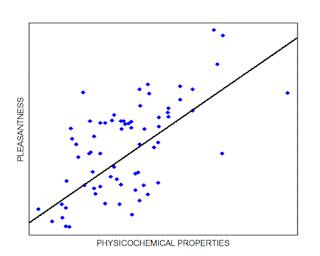IBM has built a computational
creativity machine that creates entirely new and useful stuff from its
knowledge of existing stuff. But can computers be creative? That’s a question
likely to generate controversial answers. It also raises and some important
issues too, like how to define creativity. Seemingly unafraid of the
controversy, IBM has darted into the fray by answering this poser with a
resounding ‘yes’. Computers can be creative, they say, and to prove it they
have built a computational creativity machine that produces results that a
knowledgeable human would consider novel, useful and even valuable—the
hallmarks of genuine creativity. IBM’s chosen field for this endeavour is
cooking. The company’s creativity machine produces recipes based on chosen
ingredients or cooking styles. And they’ve asked professional chefs to evaluate
the results and say the feedback is promising. Computational machines have
evolved a great deal since they were first used in war for code-cracking and
gun-aiming and in business for storing, tabulating and processing data. But it
has taken some time for these machines to match man human capabilities. In
1997, for instance, IBM’s Deep Blue machine used deductive reasoning to beat
the world chess champion for the first time. It’s successor, a computer called
Watson, went a step further in 2011 by applying inductive reasoning to huge
datasets to beat humans experts on the TV game show, Jeopardy!.
Their first problem of course is
to define creativity. The choice of problem, to create new recipes, is clearly
a human decision. The team has then gathered information by downloading a large
corpus of recipes that include dishes from all over the world that use a wide
variety ingredients, combinations of flavours, serving suggestions and so on. They
also download related information such as descriptions of regional cuisines
from Wikipedia, the concentration of flavour ingredients in different
foodstuffs from the ‘Volatile Compounds in Food’ database and Fenaroli’s
Handbook of Flavor Ingredients. So big data lies at the heart of this approach.
They then develop a method for combining ingredients in ways that have never
been attempted using a ‘novelty algorithm’ that determines how surprising the
resulting recipe will appear to an expert observer. This relies on factors such
as ‘flavour pleasantness’. The computer assesses this using a training set of
flavours that people find pleasant as well as the molecular properties of the
food that produce these flavours such as its surface area, heavy atom count,
complexity, rotatable bond count, hydrogen bond acceptor count and so on. The
last stage is an interface that allows a human expert to enter some starting
ingredients such as pork belly or salmon fillet and perhaps a choice of cuisine.
The computer generates a number of novel dishes, explaining its reasoning for
each. Of these, the expert chooses one and then makes it.
More information:
